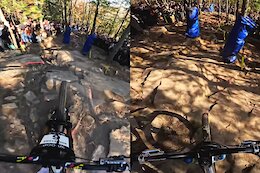In my last blog post, I introduced our GitHub sample for working with SAP Datasphere and SAP Data Quality Management, microservices. Today we are announcing our new sample to show how you might create a data quality dashboard from your address cleansing and geocoding results. If you are not familiar with our GitHub sample structure, please refer to the previous article first.
Dashboard sample using the result from SAP Data Quality Management, microservices for location data
Our sample can be found in the SAP-samples / cloud-dqm-sample-payloads repository.
This sample uses the additional details generated during the address cleansing and geocoding process to create a statistical visualization using SAP Datasphere and SAP Analytics Cloud.
Informational Output Fields
SAP Data Quality Management, microservices for location data generates several Informational codes with each API request. These codes indicate how well the address data was matched to the reference data and provide additional information if the best possible results are not achieved. The following output fields are used in this sample, but you can also obtain additional information as described in the documentation such as in Assignment Codes and Information Code and Messages.
Address Assignment Information
The output field addr_asmt_info provides the information about the validity of the address. If it is V (Valid) or C (Corrected), it is considered that the address returned is validated to the full depth in the reference data.
Address Validity
addr_asmt_info
Description
Valid
V (Valid)
Address was valid (no changes or only minor changes were made)
Valid
C (Corrected)
Address was corrected
Invalid
I (Invalid)
Address was invalid
Invalid
B (Blank)
Address input was blank
Address Assignment Level
The output field addr_asmt_level provides the level that the address matches to the address reference data.
Address Level
addr_asmt_level
Description
Premise
S (Secondary)
Address was validated to the secondary address information such as a floor and unit number
Premise
PR (Primary Range)
Address was validated to the house number
Street
PN (Street)
Address was validated to the street
City
L4 (Locality4)
Address was validated to the fourth level of city
City
L3 (Locality3)
Address was validated to the third level of city
City
L2 (Locality4)
Address was validated to the second level of city
City
L1 (Locality1)
Address was validated to the first level of city
Region
R (Region)
Address was validated to the region
Region
C (Country)
Address was validated to the country
Unassigned
X (Unassigned)
Address was not validated to any level of data
Geocode Assignment Level
The output field geo_asmt_level provides the level that the address matches to the geocode reference data.
Geocode Level
geo_asmt_level
Description
Premise
PRE (Primary Range Exact)
Address was geocoded to the exact house location
Premise
PRI (Primary Range Interpolated)
Address was geocoded to the interpolated location based on the house number range
Street
PN (Primary Name)
Address was geocoded to the midpoint of street segment
Postcode
PF (Postcode Full)
Address was geocoded to the center of full postcode area
Postcode
P2P (Postcode2 Partial)
Address was geocoded to the center of partial postcode2 area
Postcode
P1 (Postcode1)
Address was geocoded to the center of postcode1 area
City
L3 (Locality3)
Address was geocoded to the center of third-level city area
City
L2 (Locality2)
Address was geocoded to the center of second-level city area
City
L1 (Locality1)
Address was geocoded to the center of first-level city area
Unassigned
X (Unassigned)
Address was not geocoded to any level of data
Information Codes
The output fields addr_info_code and addr_info_code_msg provide the potential reasons why an address was not fully validated to the full depth in the reference data.
Info Code Series
Description
1000’s
Potential problems related to the input country or script
2000’s
Potential problems related to the input city, region, or postcode
3000’s
Potential problems related to the input street, building, house number, or postbox number
4000’s
Potential problems related to the input secondary address information or organization name
5000’s
Miscellaneous scenarios encountered when matching the input address to reference data. Not all of these scenarios are necessarily problems
Data Quality Dashboard
In SAP Analytics Cloud, you can create a dashboard to visualize the total number of records for various informational codes received from SAP Data Quality Management microservices for location data. In our example, we used pie and bar chart representations as shown below.
We Value Your Feedback!
In this blog post, we showed an example of interpreting the output data generated by SAP Data Quality Management, microservices for location data, creating the data model in SAP Datasphere, and visualizing the data to create a data quality dashboard.
If you like what we did in our sample, we would appreciate your feedback on it. Is there any additional information you would like to get from the service? Do you want to see similar reports from the Data Quality Service UI? If you would like to send us an enhancement request, please use the following channel to contact us.
Enhancement requests to SAP Data Quality Management, microservices for location dataEnhancement requests to SAP DatasphereEnhancement requests to SAP Analytics CloudEnhancement requests to SAP S/4HANA Cloud for MDM
In my last blog post, I introduced our GitHub sample for working with SAP Datasphere and SAP Data Quality Management, microservices. Today we are announcing our new sample to show how you might create a data quality dashboard from your address cleansing and geocoding results. If you are not familiar with our GitHub sample structure, please refer to the previous article first. Dashboard sample using the result from SAP Data Quality Management, microservices for location dataOur sample can be found in the SAP-samples / cloud-dqm-sample-payloads repository./ datasphere-dashboardThis sample uses the additional details generated during the address cleansing and geocoding process to create a statistical visualization using SAP Datasphere and SAP Analytics Cloud. Informational Output FieldsSAP Data Quality Management, microservices for location data generates several Informational codes with each API request. These codes indicate how well the address data was matched to the reference data and provide additional information if the best possible results are not achieved. The following output fields are used in this sample, but you can also obtain additional information as described in the documentation such as in Assignment Codes and Information Code and Messages. Address Assignment InformationThe output field addr_asmt_info provides the information about the validity of the address. If it is V (Valid) or C (Corrected), it is considered that the address returned is validated to the full depth in the reference data.Address Validityaddr_asmt_infoDescriptionValidV (Valid)Address was valid (no changes or only minor changes were made)ValidC (Corrected)Address was correctedInvalidI (Invalid)Address was invalidInvalidB (Blank)Address input was blank Address Assignment LevelThe output field addr_asmt_level provides the level that the address matches to the address reference data.Address Leveladdr_asmt_levelDescriptionPremiseS (Secondary)Address was validated to the secondary address information such as a floor and unit numberPremisePR (Primary Range)Address was validated to the house numberStreetPN (Street)Address was validated to the streetCityL4 (Locality4)Address was validated to the fourth level of cityCityL3 (Locality3)Address was validated to the third level of cityCityL2 (Locality4)Address was validated to the second level of cityCityL1 (Locality1)Address was validated to the first level of cityRegionR (Region)Address was validated to the regionRegionC (Country)Address was validated to the countryUnassignedX (Unassigned)Address was not validated to any level of data Geocode Assignment LevelThe output field geo_asmt_level provides the level that the address matches to the geocode reference data.Geocode Levelgeo_asmt_levelDescriptionPremisePRE (Primary Range Exact)Address was geocoded to the exact house locationPremisePRI (Primary Range Interpolated)Address was geocoded to the interpolated location based on the house number rangeStreetPN (Primary Name)Address was geocoded to the midpoint of street segmentPostcodePF (Postcode Full)Address was geocoded to the center of full postcode areaPostcodeP2P (Postcode2 Partial)Address was geocoded to the center of partial postcode2 areaPostcodeP1 (Postcode1)Address was geocoded to the center of postcode1 areaCityL3 (Locality3)Address was geocoded to the center of third-level city areaCityL2 (Locality2)Address was geocoded to the center of second-level city areaCityL1 (Locality1)Address was geocoded to the center of first-level city areaUnassignedX (Unassigned)Address was not geocoded to any level of data Information CodesThe output fields addr_info_code and addr_info_code_msg provide the potential reasons why an address was not fully validated to the full depth in the reference data.Info Code SeriesDescription1000’sPotential problems related to the input country or script2000’sPotential problems related to the input city, region, or postcode3000’sPotential problems related to the input street, building, house number, or postbox number4000’sPotential problems related to the input secondary address information or organization name5000’sMiscellaneous scenarios encountered when matching the input address to reference data. Not all of these scenarios are necessarily problems Data Quality DashboardIn SAP Analytics Cloud, you can create a dashboard to visualize the total number of records for various informational codes received from SAP Data Quality Management microservices for location data. In our example, we used pie and bar chart representations as shown below. We Value Your Feedback!In this blog post, we showed an example of interpreting the output data generated by SAP Data Quality Management, microservices for location data, creating the data model in SAP Datasphere, and visualizing the data to create a data quality dashboard.If you like what we did in our sample, we would appreciate your feedback on it. Is there any additional information you would like to get from the service? Do you want to see similar reports from the Data Quality Service UI? If you would like to send us an enhancement request, please use the following channel to contact us.Enhancement requests to SAP Data Quality Management, microservices for location dataEnhancement requests to SAP DatasphereEnhancement requests to SAP Analytics CloudEnhancement requests to SAP S/4HANA Cloud for MDM Read More Technology Blogs by SAP articles
#SAP
#SAPTechnologyblog














